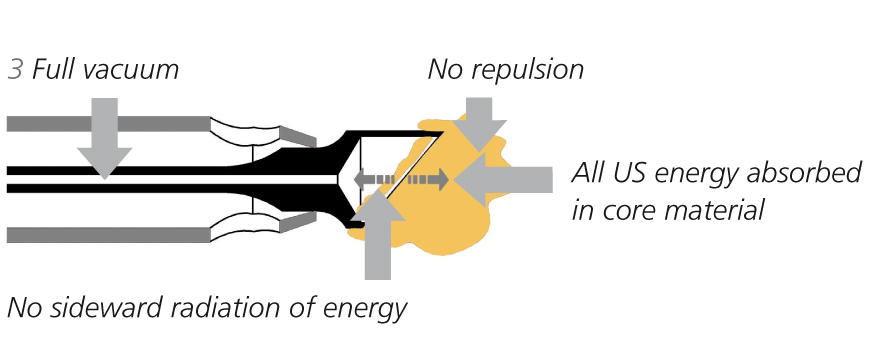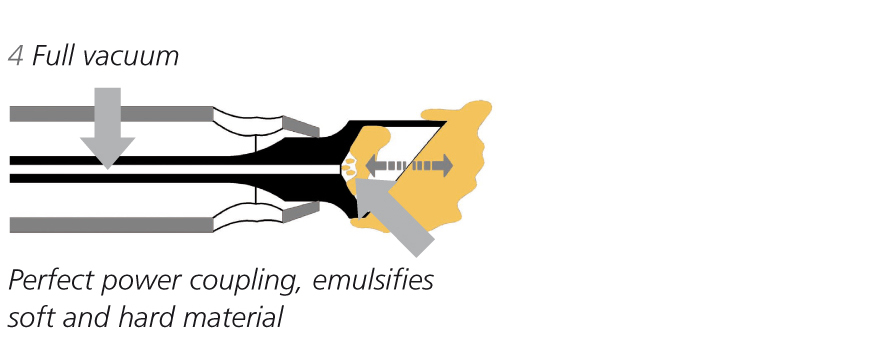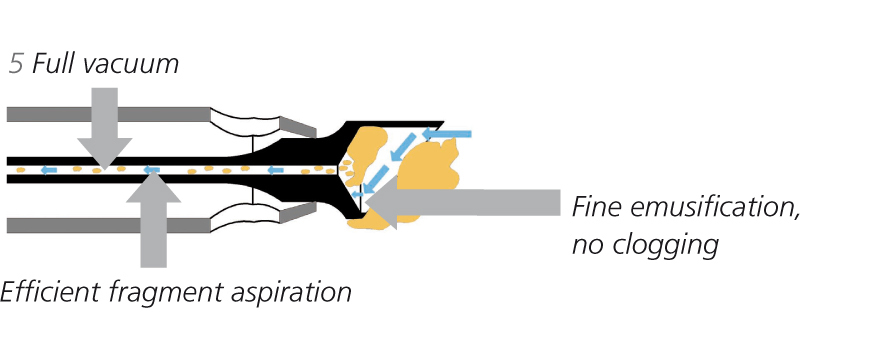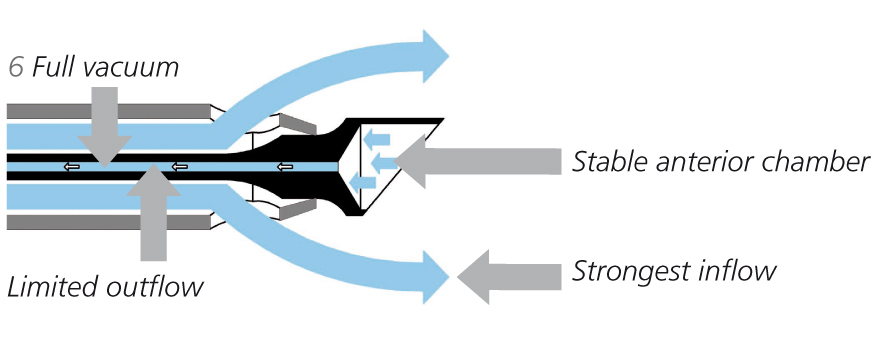supported by


Phacovitrectomy is not a new concept, but recent improvements in technique and technology for both phacoemulsification and vitrectomy have helped to grow the popularity of combining these procedures to new levels. With phacovitrectomy, we can enhance patient care in terms of shorter operating times and faster and better postoperative outcomes. Additionally, phacovitrectomy offers increased convenience to the patient by avoiding the need for a second procedure. It can also be especially helpful in cases with complicated retinal pathologies, where clear visualization is extremely beneficial.
The newfound popularity of phacovitrectomy is also due to the fact that surgeons can now perform meticulous and precise surgery through microincisions. Currently, cataract surgery and IOL implantation can be performed through a clear corneal incision size as small as 1.6 mm.
OS4: THE ADVANTAGES
For surgeons interested in microinvasive combined surgery techniques such as phacovitrectomy, the Oertli OS4 surgical platform* has several advantages.
Advantage No. 1: Outstanding chamber stability in phacoemulsification. Even when using high fluid values during combined microinvasive surgery such as phacovitrectomy, one great benefit of the OS4 is its ability to maintain outstanding chamber stability. This results in a reduced rate of side effects and faster visual recovery.
Advantage No. 2: Completely tight incisions. Being able to use a smaller incision with the OS4 mitigates the importance of wound construction. Furthermore, the incisions heal completely, which again enhances postoperative visual recovery.
Advantage No. 3: Versatility. Taken collectively, the features of the OS4 (described in detail below) and the equipment used with it create a comprehensive and versatile system that is useful for any kind of phaco and vitreoretinal surgery, especially combined microinvasive procedures. One big component of its versatility is the fact that the OS4 has three different pump modes: peristaltic, venturi, and SPEEPMode. In addition to the benefits of freely switching between peristaltic and venturi pump modes, surgeons can use the SPEEPMode for both speed and precision. Based on a peristaltic pump, in which vacuum rate is relative to flow, the SPEEPMode allows the surgeon to adjust the flow rate and control the vacuum with the wireless footpedal. Further, this mode reduces the flow rate before maximum vacuum is achieved, thus creating strong but gentle and precise aspiration. All three pump modes can be used with one single-use cassette system.
Every surgeon has different pump preferences, and I have found it extremely convenient that I did not need to relearn surgery to use the OS4. Now during phacovitrectomy, I prefer to perform phacoemulsification with the venturi pump; cortex aspiration with SPEEPMode, especially if there are weak zonules; the core vitrectomy with the venturi pump; and the peripheral vitrectomy with SPEEPMode.
Advantage No. 4: Additional safety features. The advanced High-Definition Dynamic Direct Control (HDC) fluidics on the OS4 has an active infusion feature that delivers additional safety to the combined microinvasive phacovitrectomy procedure. During both the phacoemulsification and vitrectomy parts of the procedure, the active infusion feature helps prevent sudden chamber collapse.
Advantage No. 5: Advanced cataract removal modality. Available only on Oertli surgical platforms, easyPhaco (Figure 1) is an advanced cataract removal technology that allows several features to work together to produce great holding strength at the phaco tip, thorough nucleus fragment aspiration, and minimal turbulence. Use of this technology, described on the following page, results in minimal trauma to the eye, faster healing, and less chance of induced astigmatism. Moreover, the incision remains stable and the cornea clear so that work in the posterior chamber is not impeded.

Figure 1. The easyTip CO-MICS is ideal for sub–2-mm incision surgeries.
CONCLUSION
Combined microinvasive procedures like phacovitrectomy have definite advantages, both for patients and surgeons. In my experience, performing phacovitrectomy with the OS4 surgical platform is seamless, and I know that there will be excellent chamber stability during surgery, that I can create tight and completely healing incisions and switch between three different pump modes that suit me best, and that postoperative visual recovery will be quicker.
The easyPhaco technology of the OS4 ensures that I will have great holding strength at the phaco tip, and Oertli’s sharp trocars help maintain the integrity of the incision to prevent leakage both during and after surgery.
EASYPHACO TECHNOLOGY AND ITS SIX DISTINCT BENEFITS
The easyPhaco advanced cataract removal technology uses concentrated axial phaco energy to produce great holding strength at the phaco tip. An important component of the system is the easyTip CO-MICS phaco tip (Figure 1), which is designed specifically for operating through 1.6- to 1.8-mm incisions without compromising efficiency and chamber stability. It is safe to use with vacuum rates up to 550 mm Hg and flow up to 30 mL.
By incorporating a larger internal lumen of the irrigation path that surrounds a slightly smaller aspiration path, the easyTip delivers seven times more irrigation flow than traditionally designed phaco tips. It is also available in 2.2- and 2.8-mm sizes, which can be used for 2.2- to 2.4-mm incision surgery with vacuum up to 650 mm Hg and flow up to 60 mL and for 2.8- to 3.2-mm incision surgery and maximum vacuum and flow, respectively.
In combination with the OS4’s other features, including its High-Definition Dynamic Direct Control fluidics, there are six distinct benefits of the easyPhaco technology:

1. REDUCED TURBULENCE High flow rate combined with a wide infusion path yields strong axially directed flow, which provides strong attraction of material to the tip and enhanced followability, but with minimal turbulence and a reduction in floating fragments.

2. REDUCED REPULSION The beveled edge of the phaco tip used with high vacuum settings locks fragments to the tip, reducing repulsion.

3. REDUCED LATERALLY RADIATING ENERGY Axial direction of ultrasound energy minimizes distribution to surrounding tissue when high vacuum locks the tip to the aspirate.

4. IMPROVED EMULSIFICATION The proprietary tip design and high vacuum settings create a strong coupling of ultrasound energy to the core material, thus increasing transfer of energy to the material by a factor of six. Even hard and dense nuclei can be emulsified without an issue.

5. EFFICIENT FRAGMENT ASPIRATION The finely chopped nuclear material is smoothly aspirated without clogging the port.

6. MINIMAL SURGE Because infusion capacity is seven times that of the aspiration volume, if tip occlusion occurs, the capillary aspiration channel resists a sudden flow while the wide infusion path provides a mechanism to maintain the IOP and the anterior chamber remains stable.
*The OS4 is not available for sale in the United States.
OS4, easyPhaco, and easyTip are trademarks of Oertli Instrumente AG, Switzerland.
© 2017 Oertli. All other brand/product names are the trademarks of their respective owners.
